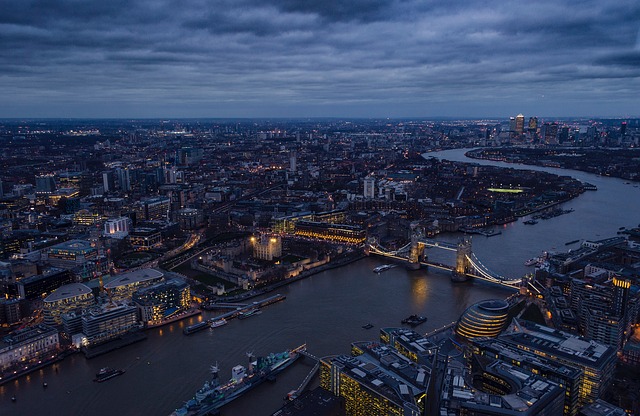London's Blue Ribbon Network
London’s strategic water network, described as the “Blue Ribbon Network” covers the River Thames, canals, tributary rivers, lakes, reservoirs, docks and other waterbodies. This water network is an invaluable resource which has connected the capital since the Industrial Revolution. The Blue Ribbon Network extends to every London borough, and it is this connection with water that gives the capital its picturesque character.
Once the primary means of transportation, the water network has been a big contributor to the successful development of the capital in the past; and yet today the waterways in London are experiencing constant degradation.
With the expansion of roadways, waterways started to lose economic significance and they are now no longer used in the same way as before. Nevertheless, as road congestion continues to rise and inner-city air quality deteriorates, London is revisiting water transportation opportunities.
Water transportation can have multiple environmental and social benefits over road transportation. Environmental benefits can be achieved owing to significantly lower carbon emissions[1]; and social benefits are achieved due to reduced congestion on London’s road network, reduced accidents and road maintenance, reduced noise pollution and so on[2]. A modal shift in transportation, where feasible, is a good opportunity to make the capital a healthier and better city for all that live here.
With London’s ever-changing skyline, construction transportation has been identified as a significant contributor to transportation emissions and road congestion. Exploiting the waterways can provide the construction sector with a good opportunity to reduce emissions and social impact. With that in view, many new developments are being encouraged to maximise the use of waterways for the transportation of building materials and construction waste.
KLH undertook a detailed study to evaluate the feasibility of water transportation for a mixed-use development project on the River Lee Navigation. The project, in theory, is ideally located with direct access to the waterway. However, the study found several limitations to exploitation of the waterways due to the lack of efficient infrastructure along the network.
The main logistical issues emerged from the lack of public wharves with cargo handling capabilities and the extensive network of publicly-accessible towpaths that restrict safe, direct access to the waterways. Furthermore, longer travel durations[3] and double handling significantly increase the cost of waterway logistics.
Based on the Department for Transport’s modal shift benefit figures, the higher logistics cost was found to largely outweigh the overall social benefit value, apart from bulk disposal of excavation waste. These findings are supported by several other studies. Consequently, the only major project currently under construction in the capital using barge transportation is the Thames Tideway Tunnel; with its Thames-side mass excavations, it is a perfect candidate for water logistics.
The social benefits of water logistics are significant, and the City of London would do well to protect existing wharves and continue to support the waste and materials handling facilities that have historically made their home in these key locations. While housing provision is an issue, and waterside locations carry an obvious premium, some of the intrinsic value of our waterways is the sight of a working vessel transporting goods and materials into the heart of the City. Hopefully, with the New London Plan’s recognition of this important resource, the capacity of the city’s waterways to support a sustainable future will be better exploited.
____________________________________________________________
[1] Figures published by DECC and DEFRA indicate that the emissions associated with water transport are significantly lower, at almost a fifth compared to road transport. (kgCO2e/tonne-km)
[2] Department for Transport’s (DfT) Mode Shift Benefit Values: Technical Report
[3] Barges used for transportation of construction materials can usually move at a speed of 3-4miles per hour, thus requiring considerably longer duration for transportation. Travel duration can be further affected because of tidal impacts and number of locks along the navigation path.
[edit] Find out more
[edit] Related articles on Designing Buildings Wiki
Featured articles and news
RTPI leader to become new CIOB Chief Executive Officer
Dr Victoria Hills MRTPI, FICE to take over after Caroline Gumble’s departure.
Social and affordable housing, a long term plan for delivery
The “Delivering a Decade of Renewal for Social and Affordable Housing” strategy sets out future path.
A change to adoptive architecture
Effects of global weather warming on architectural detailing, material choice and human interaction.
The proposed publicly owned and backed subsidiary of Homes England, to facilitate new homes.
How big is the problem and what can we do to mitigate the effects?
Overheating guidance and tools for building designers
A number of cool guides to help with the heat.
The UK's Modern Industrial Strategy: A 10 year plan
Previous consultation criticism, current key elements and general support with some persisting reservations.
Building Safety Regulator reforms
New roles, new staff and a new fast track service pave the way for a single construction regulator.
Architectural Technologist CPDs and Communications
CIAT CPD… and how you can do it!
Cooling centres and cool spaces
Managing extreme heat in cities by directing the public to places for heat stress relief and water sources.
Winter gardens: A brief history and warm variations
Extending the season with glass in different forms and terms.
Restoring Great Yarmouth's Winter Gardens
Transforming one of the least sustainable constructions imaginable.
Construction Skills Mission Board launch sector drive
Newly formed government and industry collaboration set strategy for recruiting an additional 100,000 construction workers a year.
New Architects Code comes into effect in September 2025
ARB Architects Code of Conduct and Practice available with ongoing consultation regarding guidance.
Welsh Skills Body (Medr) launches ambitious plan
The new skills body brings together funding and regulation of tertiary education and research for the devolved nation.
Paul Gandy FCIOB announced as next CIOB President
Former Tilbury Douglas CEO takes helm.
UK Infrastructure: A 10 Year Strategy. In brief with reactions
With the National Infrastructure and Service Transformation Authority (NISTA).
























